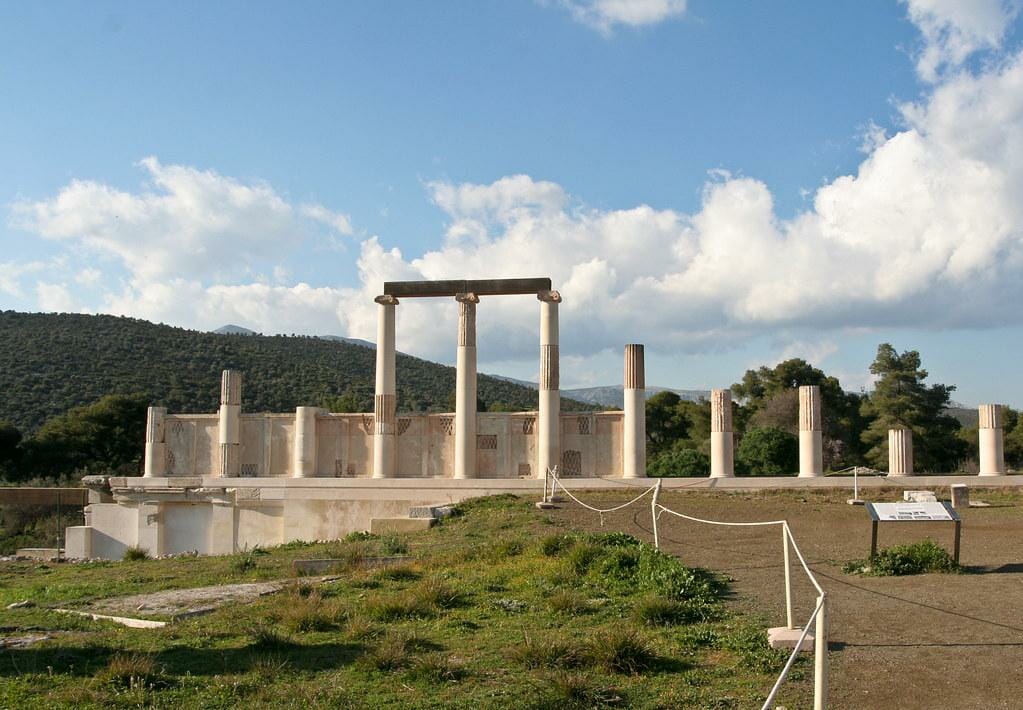The Dodecanese archipelago’s third-largest island, Kos Island, is situated between Greece and Turkey’s southwest coast. The name of the island changed over time: the Italians referred to it as Koo, the Turks named it Stankia, and the knights dubbed it Lango. The towns of Kos bear the remnants of several peoples and civilizations, from the mythological age of Hercules and King Carmia through the Hellenistic era of Asklepios, the ancient stadium, agora, and old theatre to the current day with its contemporary infrastructure. As the island monument where the heaving god Asklepios was born, it is well-known across the world.
The island was referred to as “fertile” by the ancients because its soil had always been rich and produced abundant crops. Ships traveled from its coasts to the ports of the Mediterranean and Black Seas filled with various agricultural products, primarily grapes, wine, watermelons, and melons. The technique of producing and processing silk was widely practiced among the islanders, and it was known for its famous silk textiles, which were in high demand. The island is renowned for its pristine beaches, open waters, and upbeat vibe.
On Kos, the swimming season begins in May and lasts through October. Since the water will always be warm and there won’t be any heavy rain for a while, plan your vacation at this time. Hippocrates Airport, which is named after the well-known ancient Greek physician who was born on the island of Kos, serves the city of Kos. The distance between Kos airport and the city is 22 km. You can take a bus or an airport taxi to your destination.
The bus stop is roughly 20 meters from the arrival terminal’s exit. But the travel time will be longer, not taking into account the queues. Book Kos airport transfers will be the best choice. AtoB Kos airport taxi will be particularly useful if you depart or arrive at a large party, with small children, or if you have a lot of luggage, or if you just want to avoid unneeded anxieties and bartering with other airport taxi chauffeurs. Considering potential flight delays, the chauffeur of your booked AtoB airport transfer will be waiting for you at the airport with a nameplate and will assist you with your bags.
Beaches of Kos Island
The beaches in Kos are covered in a variety of materials, although sand and small pebbles are most common. In addition, there are many types of sand, including golden, white, and occasionally even black volcanic, like on Santorini. The beaches are well-equipped; a chair and an umbrella are always available. There are several “wild” areas on Kos. It should not be difficult to find one, for example, you can ask your AtoB airport transfer driver about such places if you’re looking for seclusion.
Paradise
Paradise Beach is the island’s most well-known beach. It is situated in Kamari, easily accessible by Kos airport transfer, and is nearly 5 km long. Here, the sand is exceptionally clean, and shallow, and the water’s entrance is unobstructed. The beach has a secret: just along the water’s edge, volcanic gases rise to the surface, giving swimmers the sensation of being in a jacuzzi. Paradise Beach is also known as Bubble Beach because of its characteristic.
Tigaki
Ten km of beaches may be found in Tigaki. The water’s entry is sandy and has no rough edges. Tigaki is well-liked by water sports enthusiasts because of its windy shoreline. The resort Marmari, whose beaches deteriorate into dunes, is located to the island’s north. There are several trees on the beaches themselves that provide shade so you can escape the heat. Also, you can take an AtoB airport taxi to Kos’s northern coast where sea turtles congregate to deposit their eggs. If you purchase an expedition on a boat with a clear bottom, you may observe the magnificent reptiles.

Sights of Kos
Asclepieion
The most well-known site in Kos is Asclepios, an old temple complex that doubles as a hospital. Asclepius, the ancient Greek physician and son of Apollo, is said to have spent his formative years on the island of Kos. His medical discoveries and healing abilities reached such heights that he has become eternal. There are more than 300 Asklepios in Greece, which are a type of multipurpose ancient hospitals where patients were treated and operated on on one level, recovered on another and given thanks to the gods on a third. Even after the earthquake, the Asklepios of Kos is regarded as one of the most stunning and well-preserved.
Castle of the Ioannites
The magnificent Castle of the Ioannites has been maintained at Kos, the island’s capital. It was constructed in the fourteenth century by knights, is still in superb shape, and is located near the harbor. After arriving at this castle by AtoB airport taxi, visit the ancient plane tree on a small bridge close to the castle. According to legend, Hippocrates planted it himself and taught the Greeks medicine while sitting in its shadow. The plane tree is huge, measuring 12 meters around!




